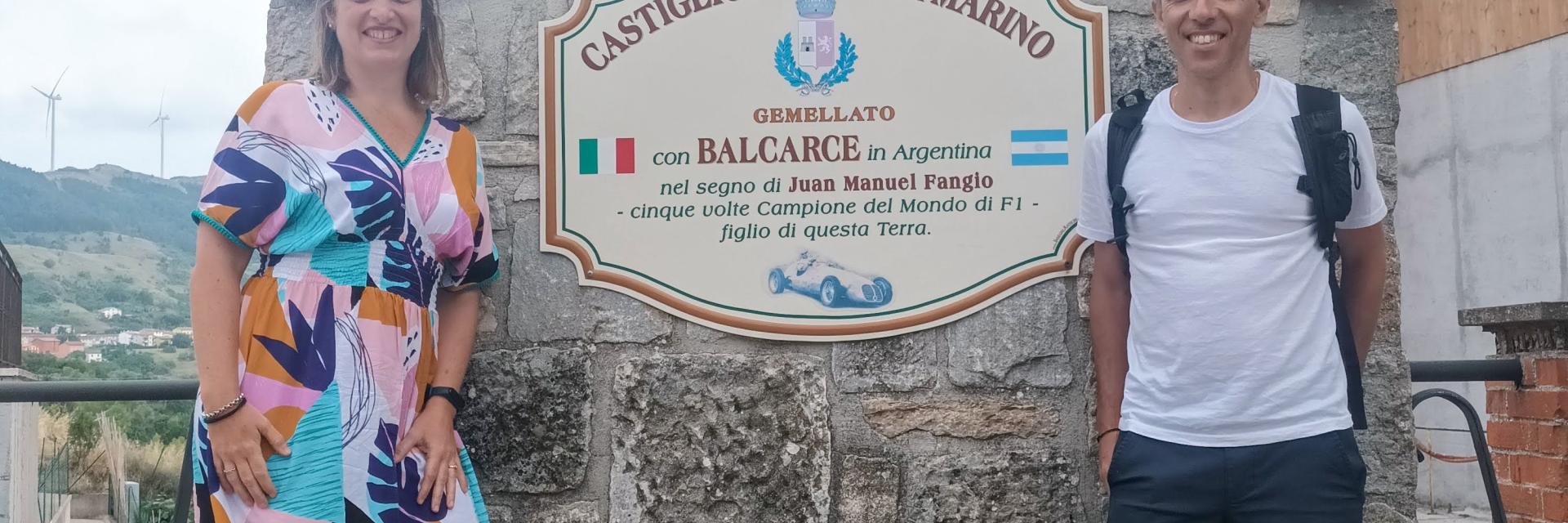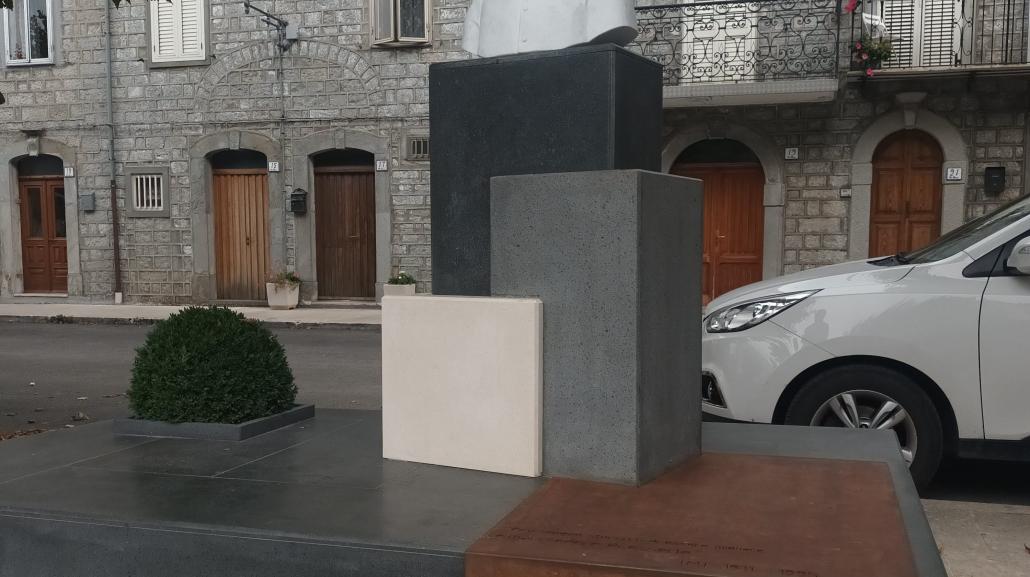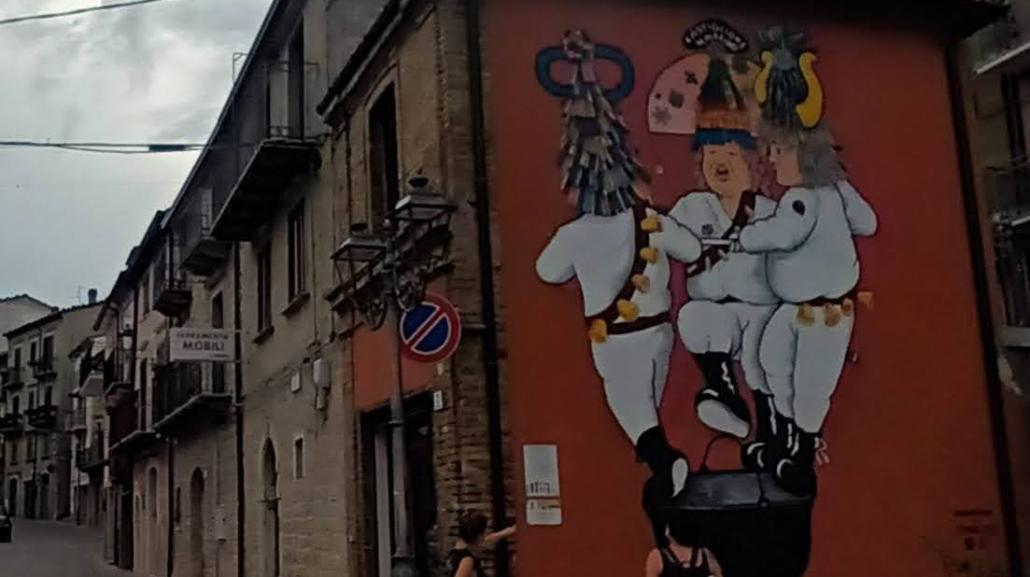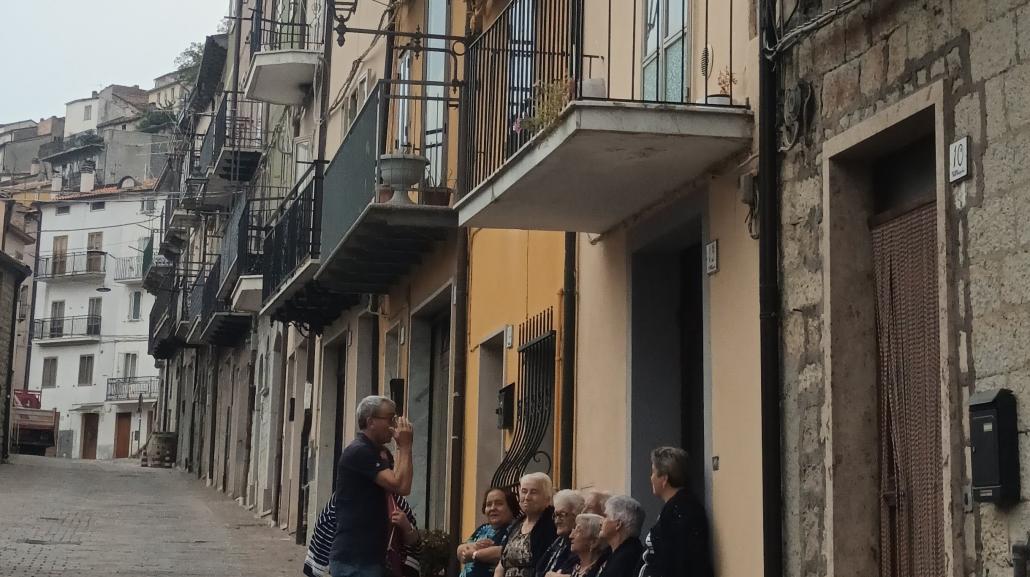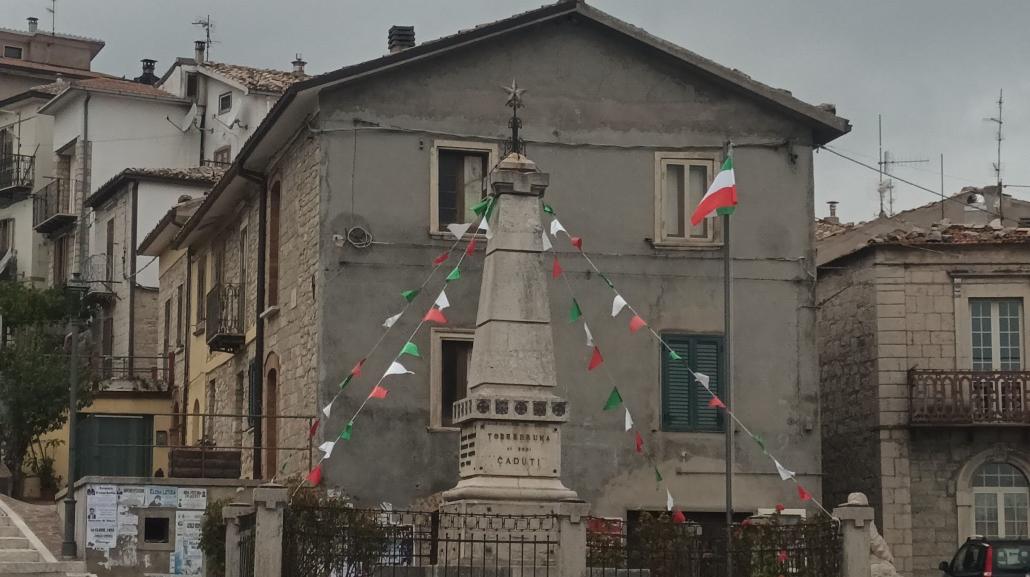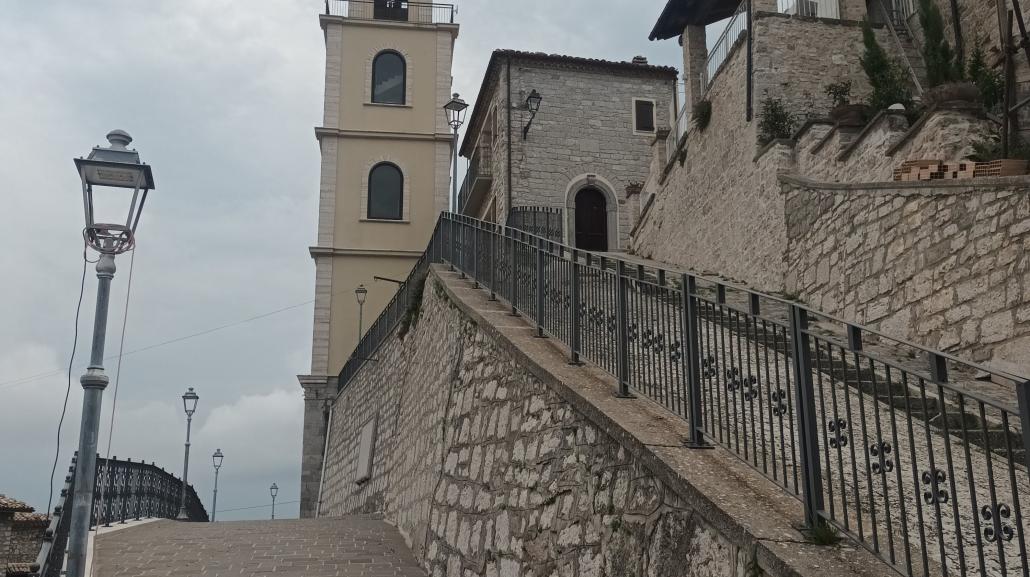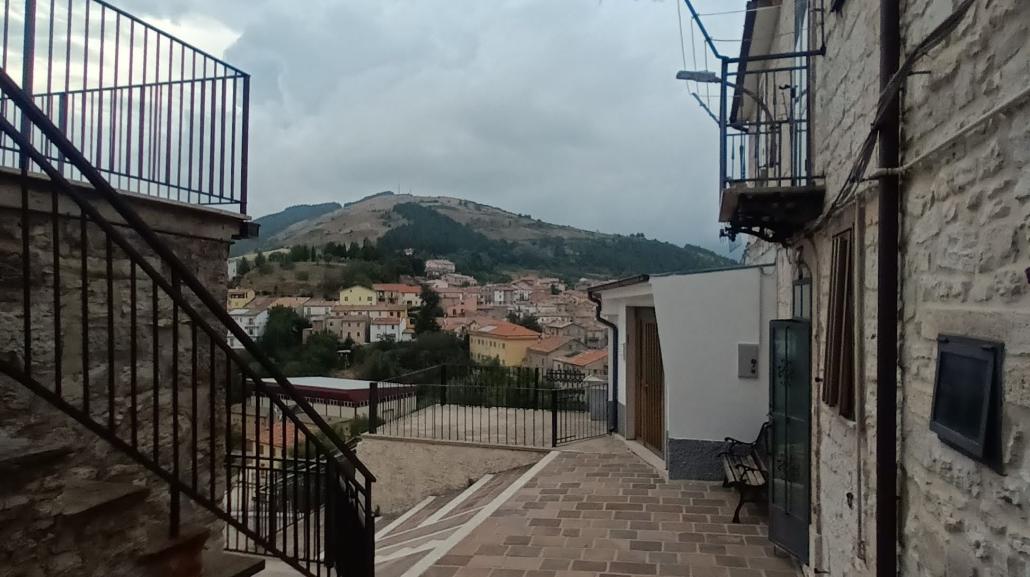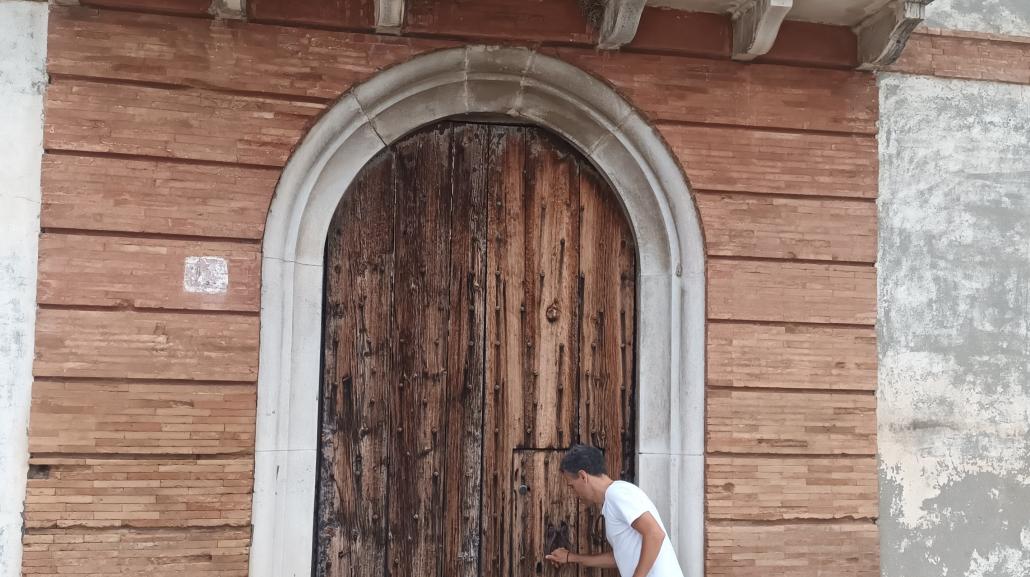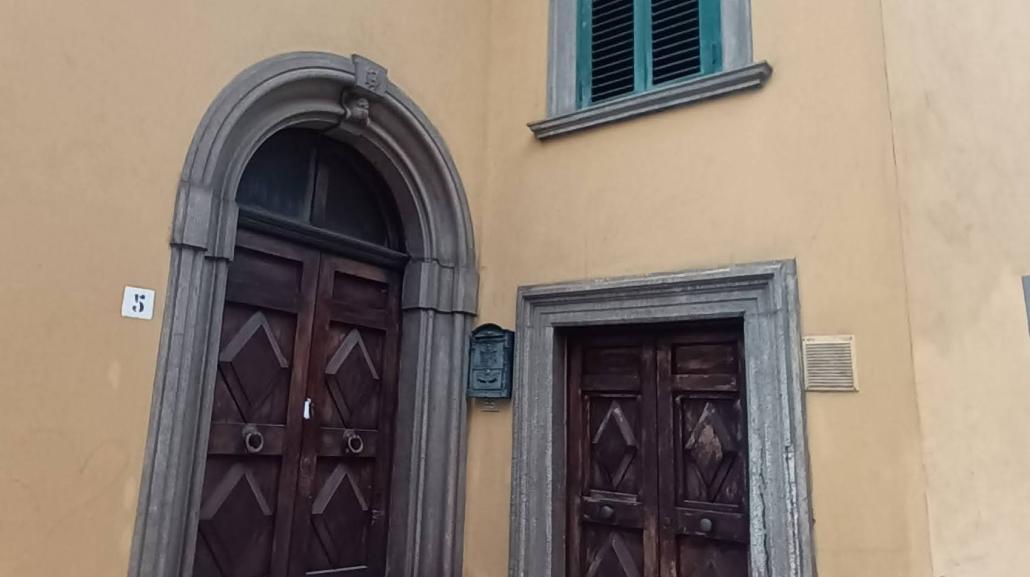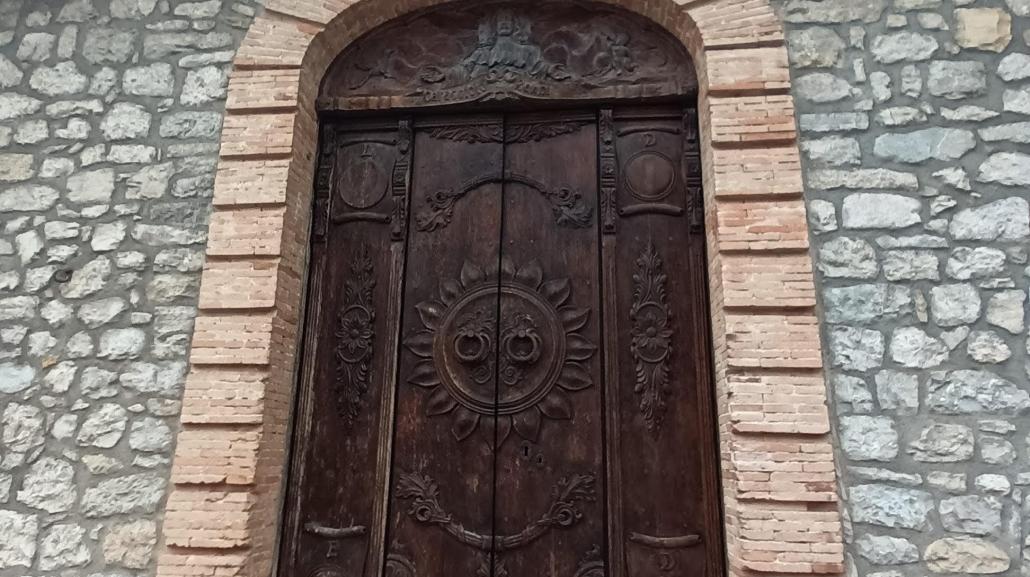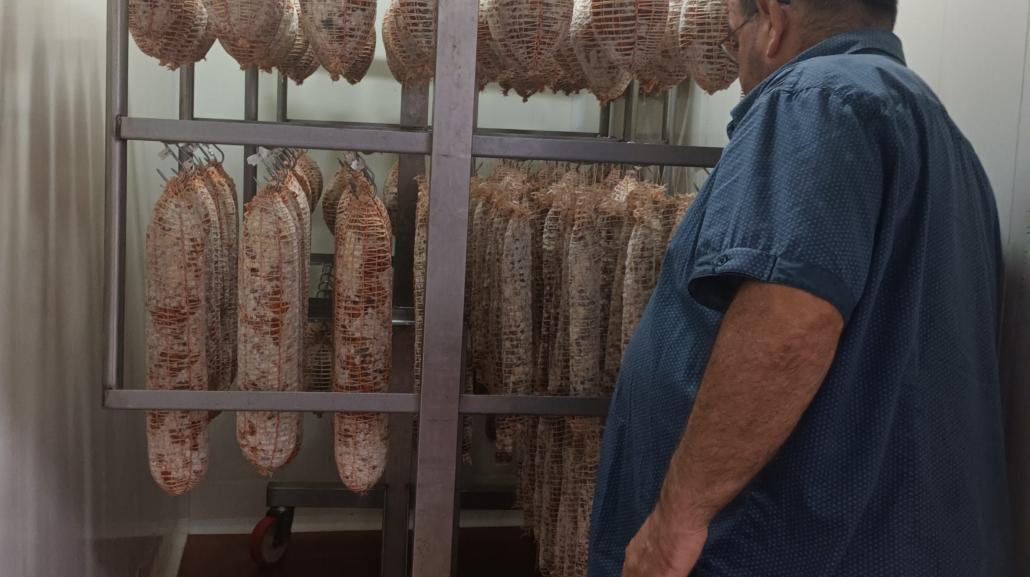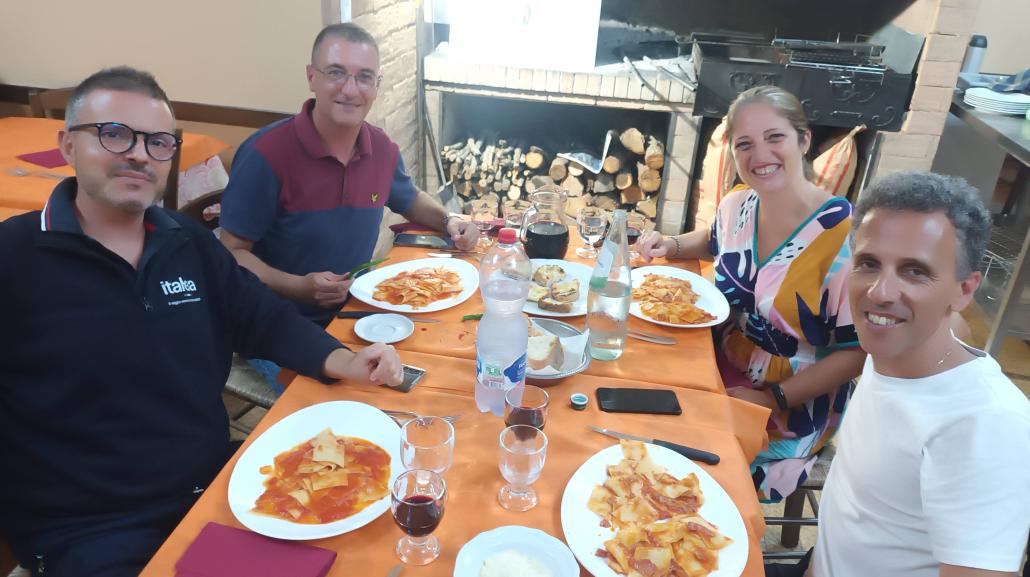Meeting the Heart of Italy: A Journey through Abruzzo Citeriore
Our trip began in the town of Ortona, a small coastal town on the shores of the Adriatic Sea, in the province of Chieti. It’s an ideal place to combine sea and mountains, and enjoy the contrast that Abruzzo Citeriore has to offer.
From Ortona, we took a regional train to Vasto-San Salvo. The journey takes about 30 minutes and there’s one train per hour. Tickets can be purchased directly at the station, and prices are quite affordable.
Once in Vasto, we took a local bus that brought us to Castelguidone. Although the trip is long (around 2 hours), the mountainous landscape along the way is truly charming. We used public transport, but if you have the chance to rent a car, we definitely recommend it — the trip is reduced to about 50 minutes, depending on traffic, and you can stop wherever you want to enjoy the amazing views.
When we arrived in Castelguidone, Marco and Ivan were waiting for us. Besides being part of the team from Siamo l’Abruzzo Citeriore, they are also representatives of Italea Abruzzo, and they know everything about the region and what visitors with Italian roots are looking for. They were our guides throughout the entire tour across the various villages in the area — each one more beautiful than the last!
Castiglione Messer Marino
Our first stop was Castiglione Messer Marino. To our surprise, this village is twinned with Balcarce, a city in the province of Buenos Aires, because it’s the birthplace of Juan Manuel Fangio’s family. Fangio was a five-time Formula 1 World Champion during the 1950s and is a beloved figure in Argentina.
We took photos at the monument and statue in his honor. Beyond the landscape and history, what touched us most was the warmth of the people. Many locals told us they had relatives living in Argentina and asked us, emotionally: “Tornate da noi!” (Come back to visit us!)
The peace of the place was felt not only in nature but also in everyday scenes: people sitting outside chatting, children playing in the square... such a lovely atmosphere.
Castiglione is also known for its traditional carnival, with masks and period costumes. In the town center, there’s a mural depicting it. The Carnival has been studied as part of the “Carnival, King of Europe” project, supported by the European Community and coordinated in Italy by the Museum of Customs and Traditions in San Michele all’Adige.
The main character is Lu Pulgenelle, a mask nominated for UNESCO’s intangible cultural heritage. He wears a hat called Capille, which can measure between 70 cm and 1 meter high, and is responsible for coordinating the dances and maintaining order during the parade
Before continuing our journey, we enjoyed a delicious ice cream at Messer Café, located in the main square.
Torrebruna
Our next stop was Torrebruna. As we arrived in the center, the first thing that caught our attention was the War Memorial, dedicated to the soldiers fallen in all Wars. It was built in 1926.
Also preserved are the old community washing basins, where laundry was once done by hand — a true trip back in time!
The stone houses, steep streets, old-fashioned lanterns, and high-altitude views create a truly unique atmosphere. Highlights include several churches: Santa Vittoria, Santa Maria delle Grazie, and San Rocco. You can also explore the Borgo Fortificato di Guardiabruna, a charming historic pedestrian area.
Carunchio
We continued our tour toward Carunchio, another village that amazed us. One thing that stood out was the doors of the homes — various sizes, styles, and intricate carved details… a true artisan’s gallery (super Instagram-worthy!).
We walked up the narrow streets to the top of the village, where the Church of Saint John the Baptist is located. Although it was closed, the views from there were simply breathtaking: red-tiled rooftops, neighboring villages in the distance, and a mountainous horizon like a perfect postcard.
Then we visited La Genuina, a local butcher shop and deli located in a restored old convent. Their star product is Ventricina, and for cured meat lovers, this place is paradise.
Luciano and Domenica, the owners, welcomed us warmly. They offered us a tasting of their products, paired with a delicious sparkling wine. What was supposed to be a quick visit turned into two hours of conversation, flavors, and stories. We bought several typical products that we enjoyed throughout the rest of our trip.
So, what is Ventricina?
It’s a pear-shaped cured meat made from the best parts of the pig (ham, loin, and fat), hand-cut and seasoned with salt, sweet and spicy pepper, fennel, and spices. It’s stuffed into the pig’s bladder, air-dried for about 20 days, then transferred to a humid environment for another 50 days. After that, it's coated in pork lard and aged for at least 60 more days. It’s only produced in mountain areas over 600 meters above sea level. This product is protected by Slow Food.
Dinner, tradition, and farewell
As night fell, we went to a restaurant, Braceria Dei Lupi, where they invited us into the kitchen to watch them prepare sagne, a traditional regional pasta. It’s made with durum wheat semolina and white flour, and served with a simple sauce of fresh tomatoes, basil, garlic, and olive oil, topped with grated pecorino cheese.
We were seated near the grill — because evenings in the mountains can get chilly — and for the main course, we tried grilled lamb, which was absolutely delicious!
Suddenly, traditional music started playing, people began to dance, and they invited us to join in. That’s how we learned to dance the Spallata and shared another unforgettable moment with the locals.
Before heading back, we stopped at Bar Roxy, where we tried La Genziana, the area’s typical aperitif. It’s a bitter digestif — honestly not my favorite, but I couldn’t leave without trying the local drink!
Once night had fully set in, we returned to Ortona, where we were staying, ready to continue exploring the region and the Trabocchi Coast.
Travel Tips
The Abruzzo Citeriore area is perfect for cycling and hiking. There are many trails that allow you to discover unique spots, so I recommend wearing comfortable clothes. Although the routes are suitable for all levels, keep in mind that some have steep climbs and descents that may require more time or effort.
I hope you get the chance to visit this beautiful place.
We can’t wait to go back!

